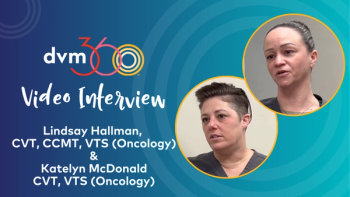
Blue-green algae blooms: How toxic waters affect pets
The Midwest heat wave has spurred the growth of blue-green algae (cyanobacteria) on lakes and ponds. Here's what you need to know.
What is blue-green algae (cyanobacteria) and where is it found?
>Typically called a bloom, blue-green algae (cyanobacteria) is an algae overgrowth that turns fresh and brackish water bluish green in color. The algae may produce toxins that are harmful to pets (and people).
>The bloom or growth commonly occurs in hot weather, especially in late summer and early fall. Higher water temperatures, steady winds that concentrate the algae on a shoreline, and fertilizer runoff in ponds and lakes are known risk factors.
>Blue-green algae overgrowth occurs throughout the United States and worldwide, especially in warm ponds and lakes receiving runoff from fertilized fields.
What is the toxin and how does it work?
>Not all blue-green algae blooms produce toxins. In fact, most don't. It is impossible, however, to tell just by looking at the water whether a toxin has been produced; therefore, all blooms should be considered toxic.
>Microcystins and anatoxins are the most common toxins produced by blue-green algae. Microcystins are harmful to an animal's liver and anatoxins to the nervous system.
>Drinking water containing toxic blue-green algae allows the toxin to enter the body and, once there, toxicosis occurs.
Threat to animals
>Dogs: Dogs, especially those that enjoy swimming in lakes and ponds or are used for hunting, are the most commonly affected species. Dogs with access to unmaintained backyard ponds and stagnant areas of water are also at an increased risk. (Note: The risk to cats is unknown and generally not discussed, because they rarely swim or spend time around lakes and ponds.)
>Horses: Range horses that derive their drinking water from ponds and lakes or those with poorly maintained ponds in their pastures may develop toxicity
>Cattle, sheep, goats, and llamas: This group of animals may be affected when their only source of drinking water is a pond or lake. Often several animals in a herd or the entire herd are affected.
>People: People exposed to blue-green algae often develop a contact dermatitis resulting in irritated and reddened skin. Care should be taken when handling animals suspected of having blue-green algae toxicosis.
Clinical signs
>Specific signs depend on the particular toxin produced.
>Animals that drink water contaminated with microcystins frequently show vomiting, diarrhea, weakness, lethargy, and pale mucous membranes within the first several hours after exposure. Death often occurs within 12 to 24 hours of exposure.
>Animals that drink water contaminated with anatoxins show weakness, lethargy, muscle tremors, rigidity, and seizures within 30 to 60 minutes of exposure. Excessive salivation may occur in some animals. Death from respiratory paralysis quickly follows the onset of signs.
Treatment
>Treatment is limited and often unsuccessful due to the rapid onset of signs. Early and aggressive supportive care including intravenous fluids, electrolytes, and medications to control seizure should be used. Atropine may be helpful in those animals that are salivating excessively.
>Prevention of exposure is critical. Animals should be kept away from ponds and lakes with visible blue-green algae blooms. In small, backyard ponds, algae should be removed and discarded. Ponds and small lakes used as water sources for horses and farm animals should be fenced to prevent exposure, and alternate water sources should be provided.
Prognosis
>The prognosis for animals is very poor once signs have occurred.
>For people, the prognosis is very good but medical intervention may be required.
Author biography
Dr. Hovda is director of veterinary services at SafetyCall International and Pet Poison Helpline in Bloomington, Minn.
Newsletter
From exam room tips to practice management insights, get trusted veterinary news delivered straight to your inbox—subscribe to dvm360.





